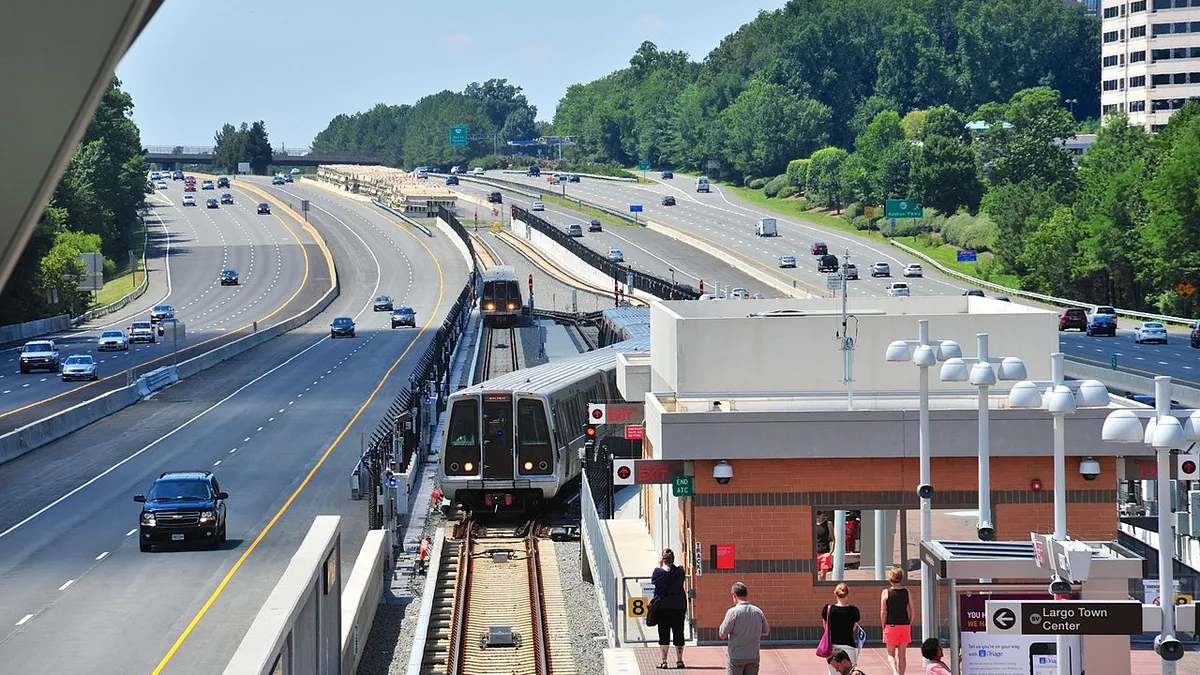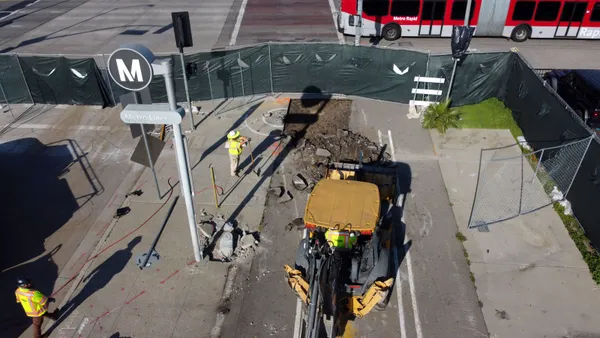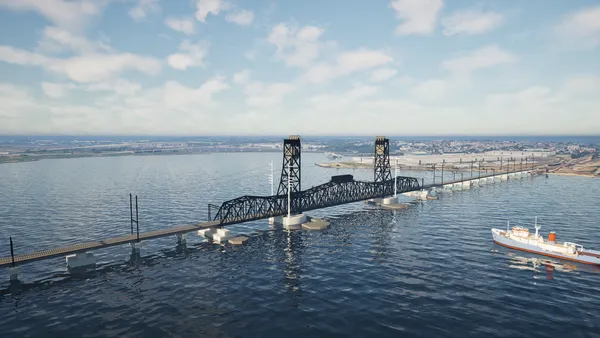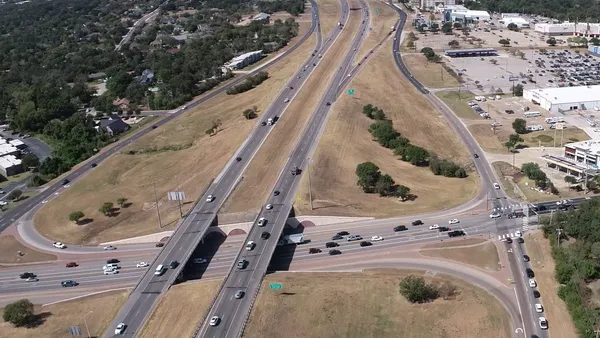Dive Brief:
- Officials with the Metropolitan Washington Airports Authority (MWAA), the agency in charge of building the Washington DC Metrorail's $5.8 billion Silver Line extension, and the project's lead contractor have identified 1,750 defective concrete panels used during station construction for the 11.4-mile line's $2.7 billion second phase, NBC4 Washington reported. Project officials said an additional 115 panels have been replaced.
- The panels were manufactured by Universal Concrete Products at its Pennsylvania plant. The water-to-cement ratio was off in the defective wall panels. The flaw, which could allow water to seep into the panels and cause cracks and rust, is not a safety concern, but could reduce the expected 100-year lifespan of the station walls. Project officials said crews will treat the panels with a special coating every 10 years to prevent water intrusion.
- MWAA officials also said that inspectors had found cracks in the rail's concrete support girders – a result of improper installation – but that those defective pieces were not manufactured by Universal. Lead contractor Capitol Rail Constructors and Universal will pay for the panel fix, and the subcontractor for the girders, along with Capitol Rail, will pay to fill in the cracks on the girders. The MWAA will turn the rail over to the Washington Metropolitan Area Transit Authority (WMATA) when construction is complete.
Dive Insight:
If the MWAA's fix for the concrete panel walls doesn’t hold, it won't be the WMATA's first battle with water infiltration. Last year, the agency's Red Line experienced service interruptions because of leaking tunnel walls. In response, the authority launched a "curtain grouting" pilot program that saw crews use a special polymer product to coat exterior tunnel walls, according to Railway Track & Structures. The coating has prevented leaks through the tunnel walls along the Red Line since its application, so the Metro began applying the product in other areas with water intrusion issues late last year, Bethesda Magazine reported.
Being held liable for construction defects can be an expensive proposition for contractors. Having the right insurance coverage can take the sting out of paying for the necessary fixes, but a solid quality control program can help contractors avoid a major outlay for repairs – and higher insurance premiums – altogether. This includes creating a written program outlining the company's quality management processes, training requirements for employees who will oversee and check the quality of materials and labor, implementation of a control system, accountability and when and how supervisors will review the program's performance and results.













